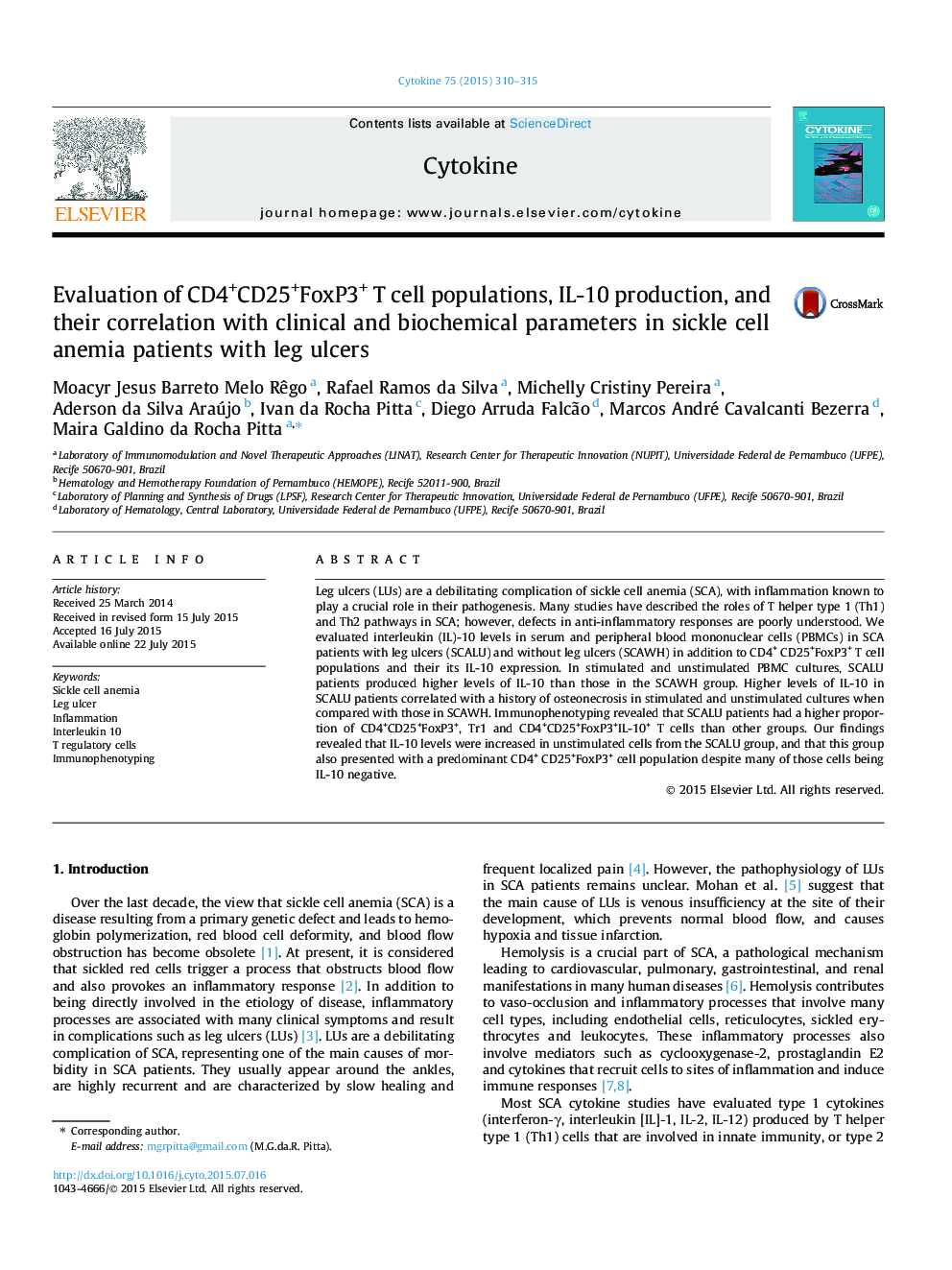| Article ID | Journal | Published Year | Pages | File Type |
|---|---|---|---|---|
| 5896939 | Cytokine | 2015 | 6 Pages |
Abstract
Leg ulcers (LUs) are a debilitating complication of sickle cell anemia (SCA), with inflammation known to play a crucial role in their pathogenesis. Many studies have described the roles of T helper type 1 (Th1) and Th2 pathways in SCA; however, defects in anti-inflammatory responses are poorly understood. We evaluated interleukin (IL)-10 levels in serum and peripheral blood mononuclear cells (PBMCs) in SCA patients with leg ulcers (SCALU) and without leg ulcers (SCAWH) in addition to CD4+ CD25+FoxP3+ T cell populations and their its IL-10 expression. In stimulated and unstimulated PBMC cultures, SCALU patients produced higher levels of IL-10 than those in the SCAWH group. Higher levels of IL-10 in SCALU patients correlated with a history of osteonecrosis in stimulated and unstimulated cultures when compared with those in SCAWH. Immunophenotyping revealed that SCALU patients had a higher proportion of CD4+CD25+FoxP3+, Tr1 and CD4+CD25+FoxP3+IL-10+ T cells than other groups. Our findings revealed that IL-10 levels were increased in unstimulated cells from the SCALU group, and that this group also presented with a predominant CD4+ CD25+FoxP3+ cell population despite many of those cells being IL-10 negative.
Related Topics
Life Sciences
Biochemistry, Genetics and Molecular Biology
Endocrinology
Authors
Moacyr Jesus Barreto Melo Rêgo, Rafael Ramos da Silva, Michelly Cristiny Pereira, Aderson da Silva Araújo, Ivan da Rocha Pitta, Diego Arruda Falcão, Marcos André Cavalcanti Bezerra, Maira Galdino da Rocha Pitta,
